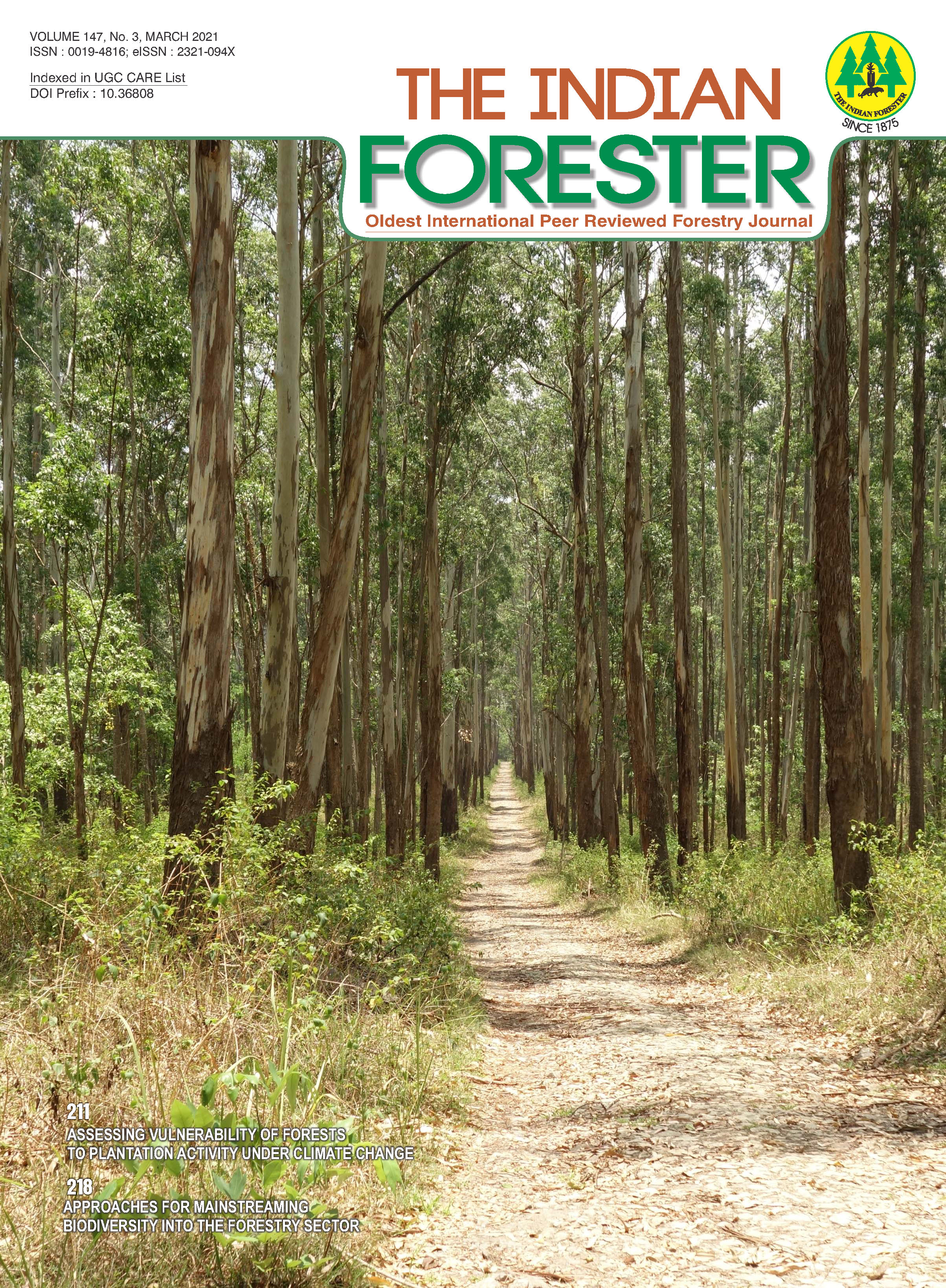Plant Composition, Diversity and Richness of Homegardens in Jharkhand, India
DOI:
https://doi.org/10.36808/if/2021/v147i3/152616Keywords:
Equitability, Homegarden, Importance Value Index, Relative Dominance Species Diversity.Abstract
The study focused on the composition and diversity of plant species in homegarden of four selected villages (Singari, Gutidih, Janum and Rangamati) of Angara block of Ranchi, Jharkhand. A total of 101 plant species (21 tree, 10 shrubs, 13 sapling, 11 seedling and 46 herbs) belonging to 43 families were recorded. In the tree layer Verbenaceae, Rhamnaceae Anacardiaceae and Leguminosae in sapling layer Rhamnaceae, Verbenaceae and Anacardiaceae, in seedling layer, Rhamnacea, Verbenaceae and Moraceaein shrubs layer Caricaceae, Moringaceae and Verbenaceae were most dominant family. However, in herbs layer Poaceae, Brassicaceae, Solanaceae Cucurbitaceae and Malvaceae were most dominant family. In Singari village found 16 tree, 6 shrub, 8 sapling, 6 seedling and 23 herbs whereas in Gutidih village found 13 tree, 5 shrub, 5 sapling, 4 seedling and 19 herbs. In Janum village found 11 tree, 5 shrub, 6 sapling, 6 seedling and 26 herbs whereas in Rangamathi village found 13 tree, 6 shrub, 8 sapling, 5 seedling and 33 herbs. The practice of indigenous agroforestry homegarden is an integral component in Jharkhand and play crucial role in supplying vegetables, fruits, fuel wood, small timber, herbs and spices etc. for their daily requirement.References
Collins W.W. and Qualset C.O. (1998). Biodiversity in Agroecosystems, (CRC Press, New York),
Curtis J.T. and McIntosh R.P. (1950). The interrelations of certain analytic and synthetic phytosociological characters. Ecology, 31: 434-455.
Fernandes E.C.M. and Nair P.K.R. (1986). An evaluation of the structure and function of tropical home gardens, Agric Syst., 21: 279-310.
Kumar V. and Tripathi A.M. (2017). Vegetation Composition and Functional Changes of Tropical Homegardens: Prospects and Challenges. In Agroforestry for Increased Production and Livelihood Security; Gupta S.K., Panwar P., Kaushal R., Eds.; New India Publishing Agency: New Delhi, India, pp. 475–505. ISBN 9789385516764.
Margalef R. (1958). Information theory in ecology. General Systematics, 3: 36-71.
Marsh R. (1998). Building on traditional gardening to improve household food security. Food Nutr Agr., 22: 4–14.
Nair P.K.R. (1993). An Introduction to Agroforestry. Dordrecht, The Netherlands: Kluwer Academic Publishers.
Ninez V.K. (1987). Household gardens: theoretical and policy considerations. Agroforestry Systems, 23: 167-186.
Pielou E.C. (1966). The measurement of diversity in different types of biological collections. Journal of Theoretical Biology, 13: 131-144.
Shannon C.E. and Weaver W. (1949). The Mathematical Theory of Communication. University of Illinois Press, Urbana, IL USA, pp. 117.
Simpson E.H. (1949). Measurement of diversity. Nature, 163: 688.
Smith R.L. (1974). Ecology and Field Biology. Harpar and Row Publication, New York, pp. 850.
Sousa L.L.P.D., Silva D.L.D.S., Gomes G.D.S., Silva G.S.D., Oliveira R.F., Araujo M.D.F.V. and Conceicao G.M.D. (2018). Agrobiodiversity of Homegardens in Maranhao, Brazil. Asian Journal of Environment and Ecology, 7: 1-7.
Subba M., Sarkar B.C., Pala N.A., Shukla G., Vineeta and Chakravarty S. (2018). Species diversity, size and component arrangement in homegardens of North Bengal, India. Indian Journal of Agroforestry, 20: 1-5.
Downloads
Downloads
Published
How to Cite
Issue
Section
License
Unless otherwise stated, copyright or similar rights in all materials presented on the site, including graphical images, are owned by Indian Forester.





